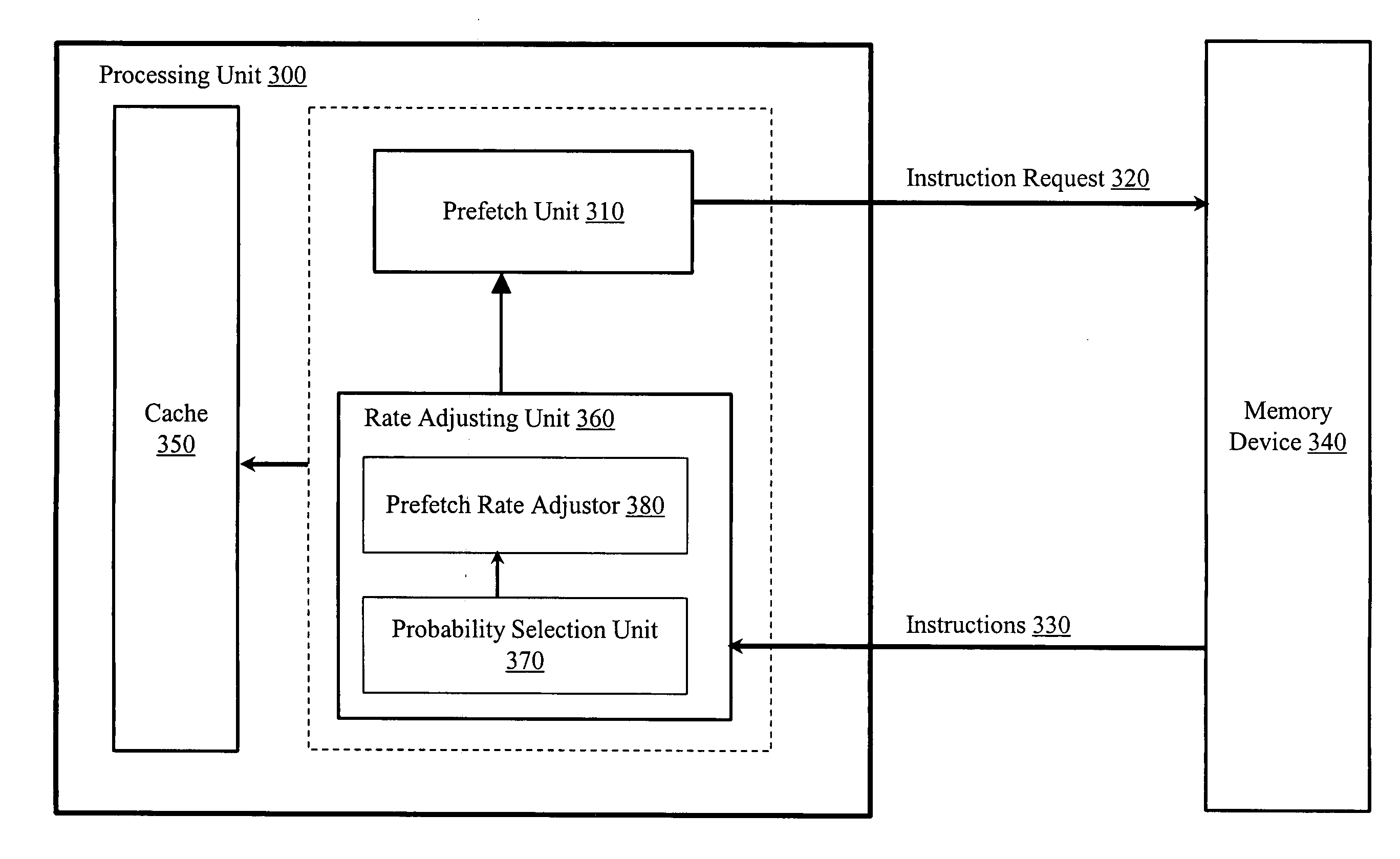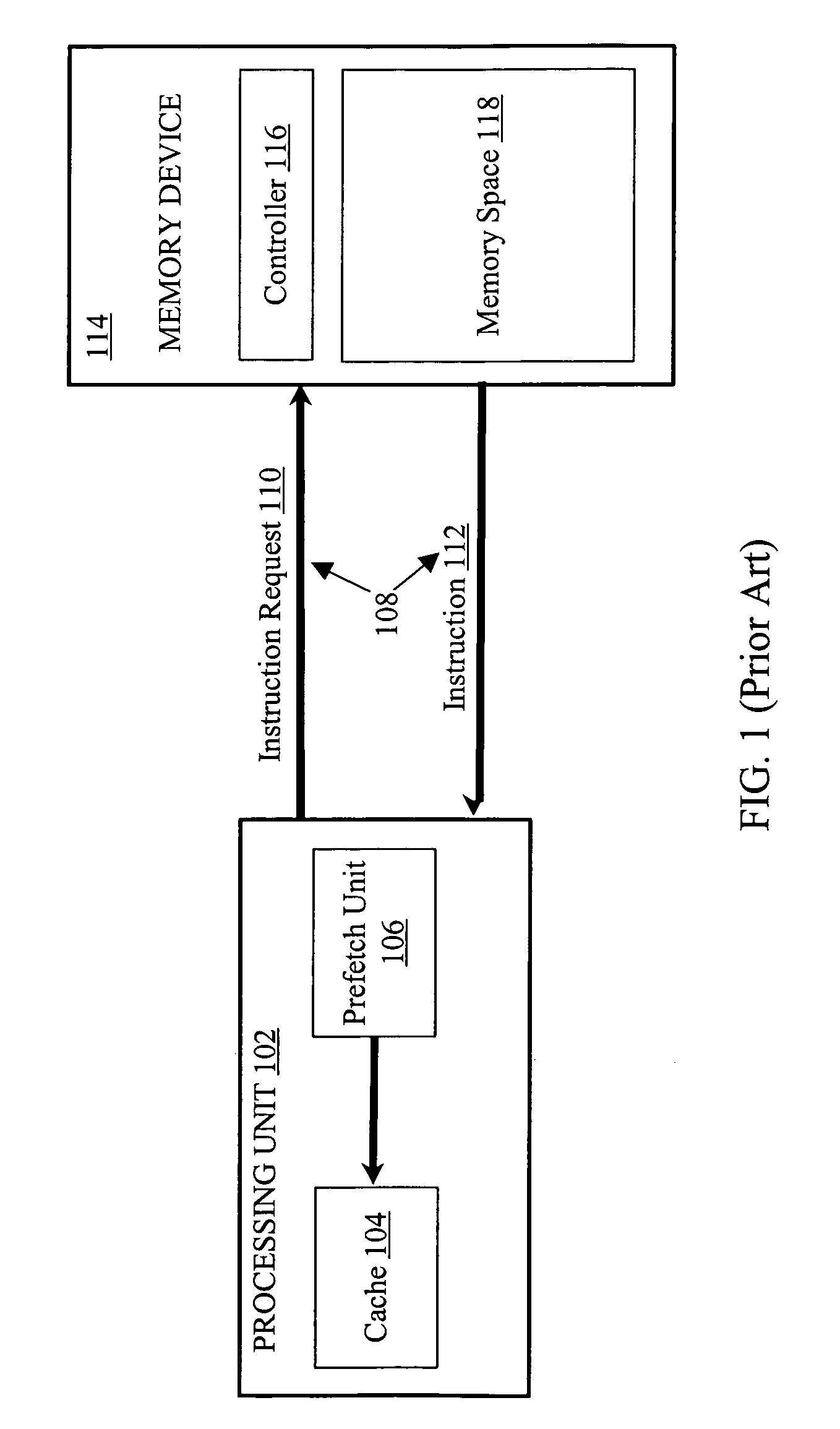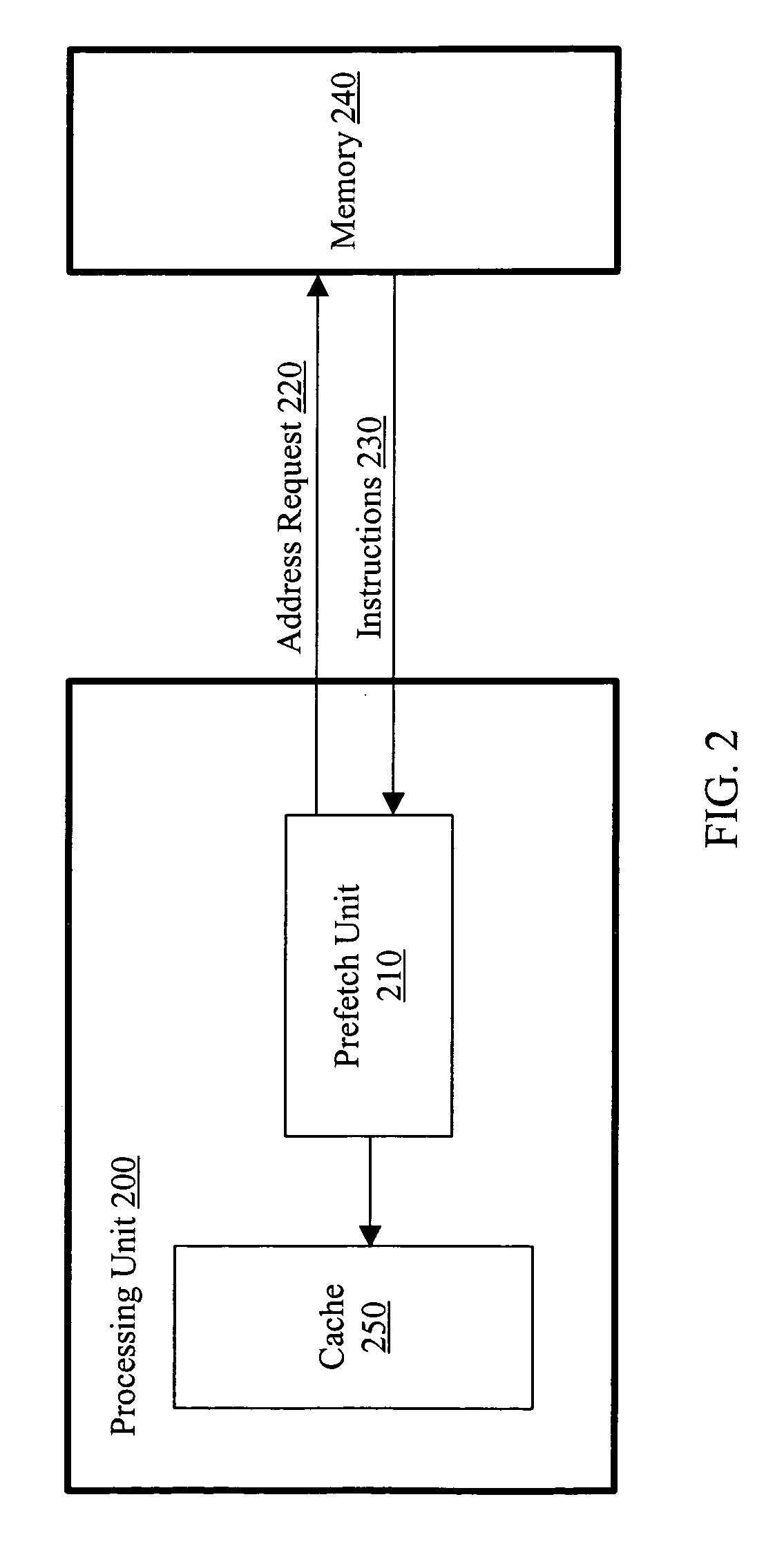[0020]Instruction prefetching may improve processing unit performance by allowing blocks of information to be prefetched from a higher level of memory and stored in a lower level of memory, which may contain a more accessible, faster memory device (e.g., a cache memory device). As such, many computer systems may include various levels of a
memory hierarchy, in which the lower level memory devices are often smaller and faster than the one or more previous levels. When the processing unit requests an instruction at a specific
memory address, a block of instructions including the requested instruction may be fetched from a higher ordered memory device, such as a main memory device, a disk drive, etc. In most cases, the instructions in the block are taken from consecutive memory addresses and stored in a lower ordered memory device, such as a cache memory device. Such systems may advantageously reduce the number of main memory accesses, thereby improving the
execution time and reducing the power consumption of the processing unit.
[0023]To decrease power consumption and improve
microprocessor performance, improved circuits, systems and methods are provided herein for adjusting a prefetch instruction rate. In some cases, the prefetch instruction rate may be adjusted by changing the prefetch instruction rate from a first rate to a second rate, where the second rate is typically slower than the first. For example, when a
conditional branch instruction is encountered, instructions related to a target address may be prefetched at a second rate, which is slower than the first rate. Prefetching at a slower rate will allow fewer instructions to be fetched from memory in case the target address is incorrect. Therefore, adjusting the prefetch instruction rate may reduce the number of instructions not used by a processing unit, resulting in decreased power consumption.
[0025]In programs that are inundated with branch instructions, adjusting the prefetch instruction rate will ensure that, if the target address is mis-predicted, the number of useless instructions will be less than if the instructions were prefetched at a fixed prefetch instruction rate. As will be described in more detail below, adjusting the prefetch instruction rate improves the performance of the processing unit by reducing the number of instructions not being used in the pipeline and reducing the power consumption of the processor. Thus, a computer
system, circuit, and method are contemplated herein for prefetching at a first rate, detecting a branch instruction, determining the type of branch instruction detected, determining a probability factor associated with the type of branch instruction, calculating a second rate, and adjusting the prefetch instruction rate from the first rate to the second rate (if necessary).
[0029]In addition, the method may include selecting a mispredict band corresponding to the probability factor. The method may also include calculating a second value for prefetching, wherein the step of calculating a second value may include subtracting the mispredict band from a first value. As used herein, the first value may correspond to a first prefetch instruction rate and the second value may correspond to a second prefetch instruction rate, where the second rate is typically slower than the first. In some cases, the method may include adjusting the prefetch unit, so that the instructions corresponding to the target address are prefetched at the second rate, if the probability factor indicates that there is only a small likelihood that the target address is correct. In this manner, the current method may be used to decrease the number of memory requests and useless number of instructions retrieved (e.g., by 20% or more) which, in return, reduces the power consumption by roughly the same amount (e.g., about 20% as well).
[0032]In addition to the probability selection unit, the circuit may include a prefetch rate adjustor for adjusting the prefetch instruction rate of a prefetch unit (e.g., from the first rate to a second rate) based on the probability factor. In some cases, the prefetch rate adjustor may include an arithmetic unit (e.g., a
subtractor) for calculating a second value by subtracting the selected mispredict band received from the first
multiplexer from a first value, wherein the first value corresponds to the first rate and the second value corresponds the second rate. The prefetch rate adjustor may also include a second
multiplexer coupled between the arithmetic unit and the prefetch unit. In some cases, the prefetch rate adjustor may allow the prefetch instruction rate of the prefetch unit to remain at the first rate for a particular probability factor (e.g., a
high probability factor). In other cases, the prefetch rate adjustor may reduce the prefetch rate of the prefetch unit to a second rate, slower than the first (e.g., for a lower probability factor). As such, the second
multiplexer may be configured to select between the first rate and the second rate based on the probability factor provided by the probability selection unit.
[0033]In some cases, the prefetch rate adjustor may also include a register for storing the first and second values. As such, the register may store subsequent new values corresponding to subsequent new rates. The prefetch rate adjustor may also include a
comparator unit coupled to the register for comparing the second value to a set of threshold values. The
comparator may also be configured to adjust the prefetch rate (e.g., from the first rate to the second rate) based on the comparison with the threshold values. Thus, the circuit described may advantageously reduce the number of memory access, as well as the number of useless instructions introduced into the pipeline, as compared to implementations with fixed prefetch rates. In some cases, the overall performance of the processing unit may be improve by about 20% and the power consumption may be reduced by about 20% over traditional methods.
 Login to View More
Login to View More  Login to View More
Login to View More 


